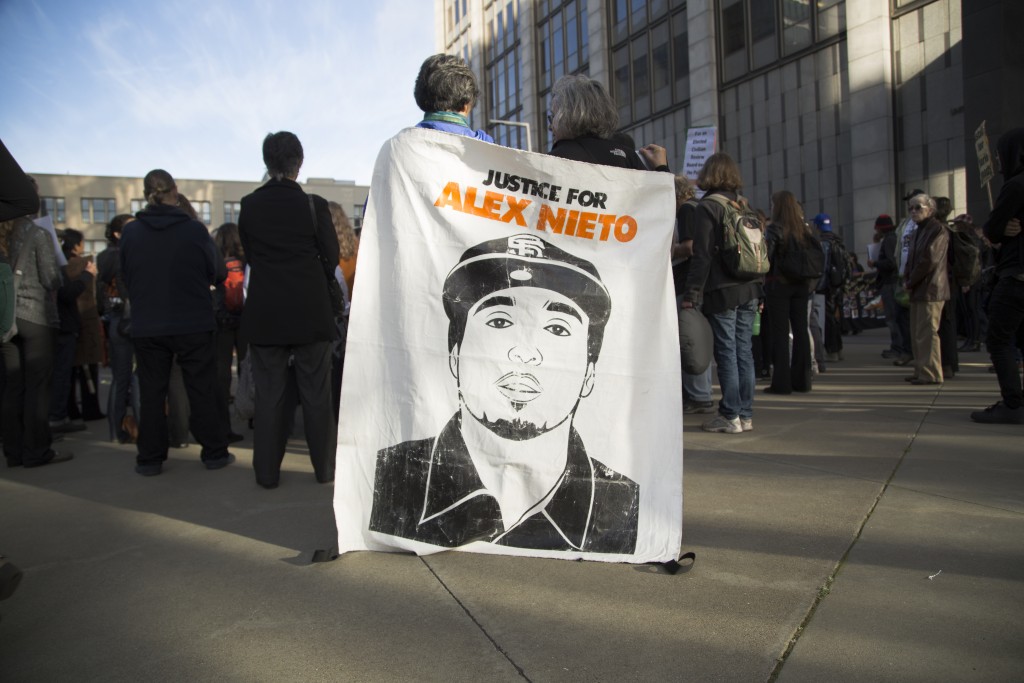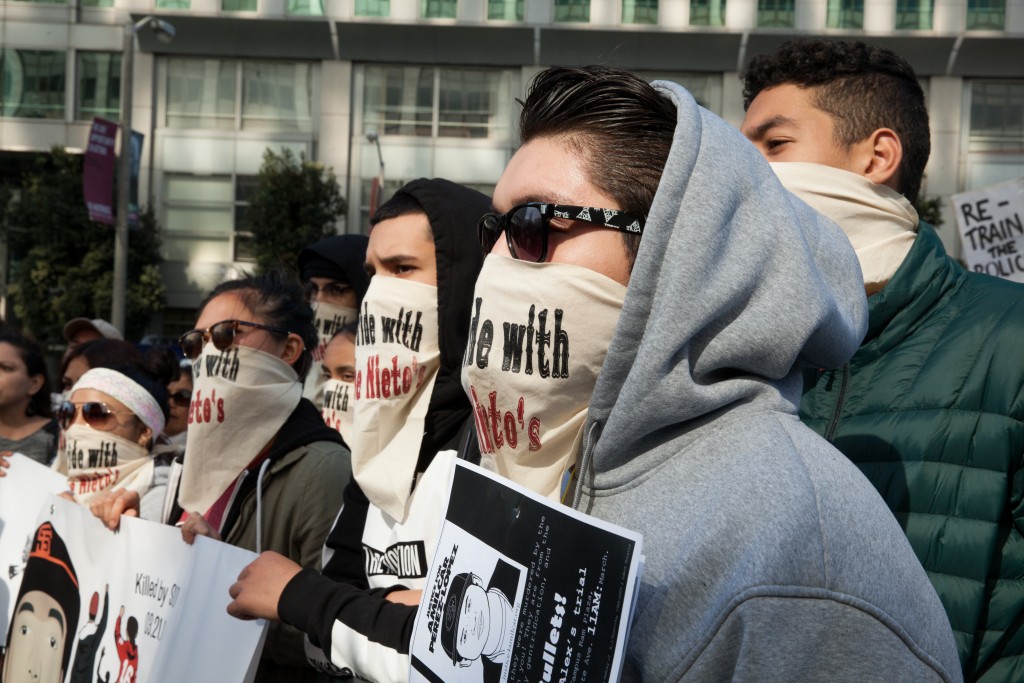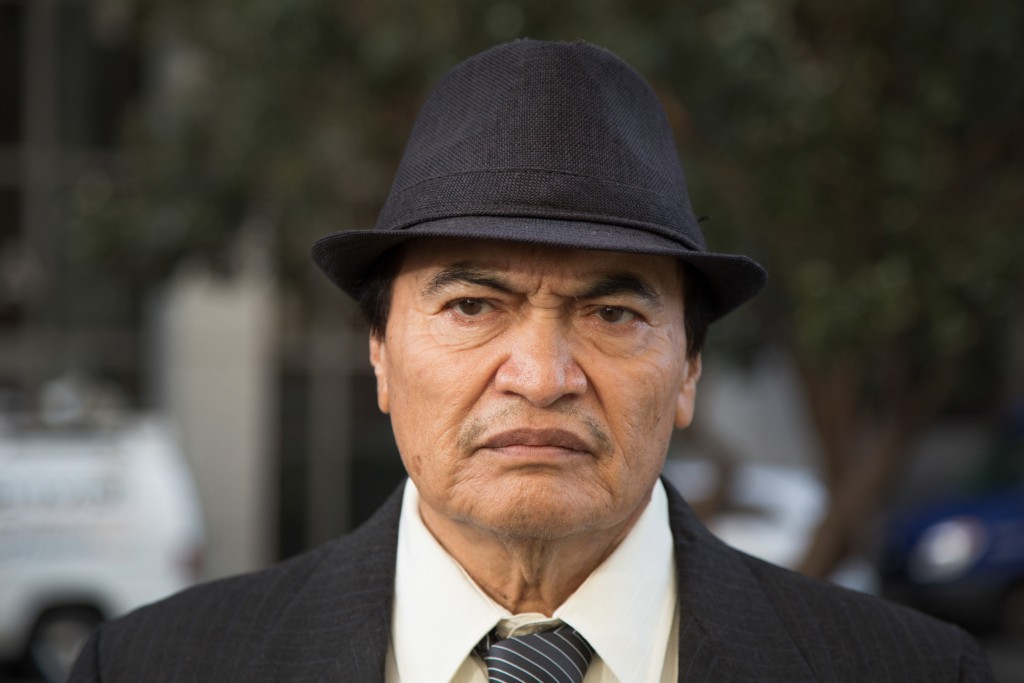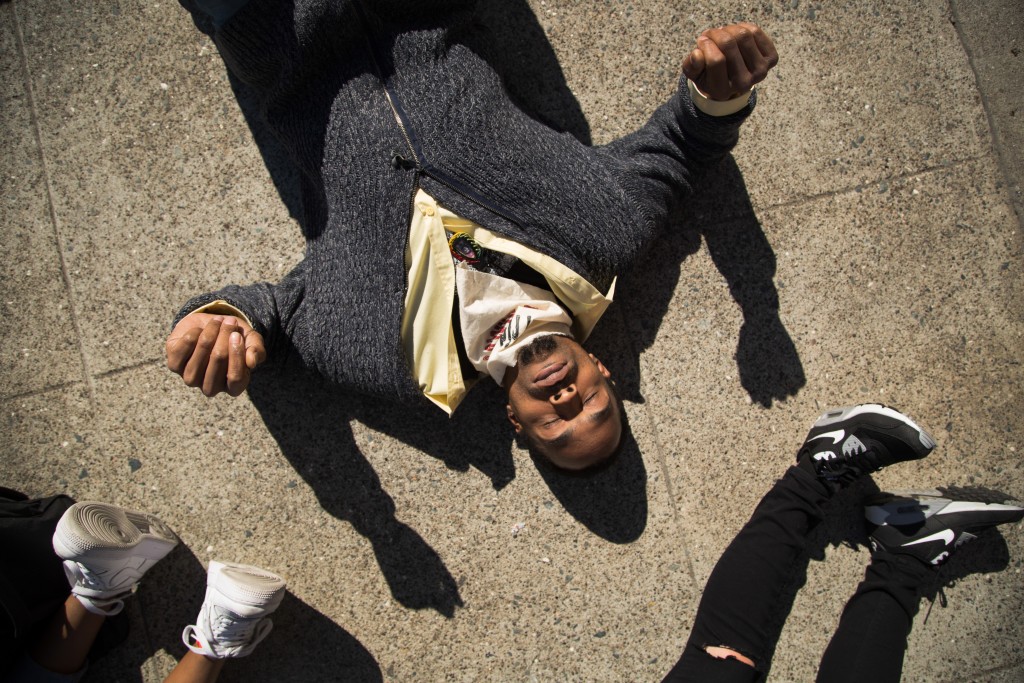Testimonies Clash in Alex Nieto’s Civil Rights Trial
By Marco Siler-Gonzales and KR Nava

The parents of Alex Nieto finally had their day in federal court for their son, a City College student who was shot and killed by San Francisco Police officers in Bernal Heights Park nearly two years ago.
On the opening day of the trial on March 1, Judge Magistrate Nathanael M. Cousins whittled a juror pool of 30 down to eight. Five women and three men, none Black or Latino, will decide whether Nieto’s civil rights were abused and if Nieto’s family deserves monetary reparation for his death.
Nieto’s family lawyer, civil rights attorney Adante Pointer, is pressing civil rights charges against the City and County of San Francisco for the killing of Alex Nieto by police on March 21, 2014. The four officers—Lt. Jason Sawyer and Officers Roger Morse, Richard Schiff and Nathan Chew, are all charged with excessive force, violation of Nieto’s civil rights and wrongful death under California law.
The Call
At 7:11 p.m., a passerby called the police after seeing Nieto in the park acting strangely—and believed his holstered Taser was a gun. Upon approach, dispatch alerted the officers that a Latino male, wearing red, was seen with a gun atop Bernal Heights Park.

The defense, led by Deputy City Attorney Margaret Baumgartner, alleged justification for the officer’s decision to draw their sidearms and fire upon Nieto.
Lt. Sawyer and Officer Schiff arrived at the gated entrance of Bernal Hill, drove over the curb and continued up the hill where they saw Nieto 70 to 100 yards away.
Upon Sawyer’s instruction, Schiff continued driving until the cruiser was about 30 yards from Nieto. At this point, both officers testified they had not yet seen Nieto draw a weapon or make any erratic movements.
Rather than calling out to Nieto verbally, turning on his police lights or using the loudspeaker installed in his vehicle, Schiff got out of the car, drew his gun and called out, “Show me your hands.”
Schiff began to call out the same phrase again, but alleged he was interrupted by Nieto shouting back, “No, show me your hands.”
Schiff said both of Nieto’s hands were then raised at chest level in what he called a “blade, or fighting, stance.”
Schiff described Nieto as having reached down to his waist, where his holster was, pulled out his Taser—which Schiff claimed he believed was a firearm due to the weapon’s red laser light—and “punched out” his hands forward. Schiff then opened fire.
“You believed (Nieto’s Taser) was being fired?” Pointer asked.
“Yes,” Schiff said, then admitted that he had not seen the weapon recoil, emit smoke, release a muzzle flash or shoot prongs—nor had he heard any bullets making contact with the glass or metal of the police car behind which Schiff and Sawyer were firing.
After firing 59 shots, they approached Nieto’s body and realized the weapon was an electric stun gun, which is considered a non-lethal gun.
“The officers kept firing because the man kept aiming at them,” Baumgartner said. “These officers did what they were trained to do.”

Justification
Both Schiff and Sawyer claimed, as per police code, that each and every bullet was justified.
Yet the prosecution’s examination of seasoned veteran Sawyer and rookie officer Schiff exposed holes in their justifications for what happened.
Both Schiff and Sawyer testified that once they opened fire, at least one of them continued shooting Nieto even after he fell to the ground.
The officers fired ceaselessly because they believed Nieto continued to pose a threat, according to Schiff.
Nearby, a home security system recorded the sound of the shooting and includes a seven-second pause between a first round of shots and a second, longer round, wrote investigative reporters at 48 Hills.
Asked if there was ever a pause in the barrage of bullets, Sawyer said, “I don’t remember that happening.”
This raises questions as to why the officers would stop shooting, why they continued and why both Schiff and Sawyer failed to remember such an important detail.
Other conflicting information arose during the day’s examinations. Part of Schiff’s rationale for engaging Nieto in fire was how he perceived Nieto’s demeanor as Nieto approached the officers.
“He approached ‘purposefully,’” Schiff said, leading to a discussion over what exactly that meant.
Schiff elaborated by describing Nieto’s gait as “close to marching,” standing up and simulating Nieto’s walk by pumping his hands back and forth. The prosecution made sure to note that prior to March 2, in both his official report and his deposition, Schiff had never described Nieto’s movements this way.
Schiff also said that Nieto’s brow was furrowed and his cheekbones raised.
“Would it surprise you to learn that Nieto was wearing a hat?” Pointer asked. Evidence showed that the hole in Nieto’s black 49ers hat matched the location of the bullet wound in his head, but neither Schiff nor Sawyer recalled seeing the hat.
Schiff did, however, remember that he “made direct eye contact with (Nieto)” then answered no when asked if he remembered whether Nieto had been wearing sunglasses.
Nieto had been wearing sunglasses, exposing another flaw in the official account of events that evening.

Who to Trust
Police officer testimonies described the shooting of Alex Nieto as self-defense, but an eyewitness testified in federal court on Thursday, March 3 the shooting was unwarranted and Nieto had little warning before the shots were fired.
Antonio Theodore was jogging in Bernal Heights Park with his dog the evening of Nieto’s death when he saw Lt. Sawyer and officer Schiff driving up Bernal Hill to approach Nieto. Theodore testified that the two officers stopped about 150 feet away, exited their vehicle and took shooting positions behind their car doors.
“One officer on the driver side yelled, ‘Stop!’” Theodore said in federal court, “and then fired first shot, second, third, then the person fell on his knees, then the fourth shot and he fell on his face.”
Moments later, Theodore said he saw two other officers arrive at the scene. The firing continued in rapid succession as Nieto lay face down on the ground.
Pointer questioned Theodore to what Nieto’s demeanor was as he walked down the hill and where his hands were positioned before and after the shooting. Theodore testified that Nieto was walking calmly down Bernal Hill with his hands in his jacket pocket, and was shot with his hands still in his pockets.
Theodore’s chain of events directly contradicts the officers’ stories. Officer Schiff and Lt. Sawyer testified that Nieto was walking purposefully toward them, taunted the officer’s command to show his hands, and pointed what the two officers assumed was a pistol in a firing position at them.
Officers Chew and Morse arrived at the scene after the first four shots were fired. Officer Chew testified that he exited his car from the passenger side with his gun drawn and saw Nieto in a prone position.
“I saw the red laser trying to acquire me as a target,” Chew said. He then fired five rounds at Nieto.
Theodore’s testimony makes Chew’s scenario impossible, as Nieto could not have been pointing his weapon at the officers if he had already been shot and was face-down with his hands in his pocket.
Theodore said he was afraid to report what he had seen to the police. ”It would be hard to tell an officer that I saw a fellow officer shoot someone up. I didn’t trust police,” he said.
Theodore’s story came out when a city attorney investigator interviewed him some time after the shooting, and he was later deposed by the District Attorney’s office.
Pattern of Inconsistency
But Theodore’s credibility as an eyewitness came under question after the defense’s thorough cross-examination.
SFGate reported that Baumgartner questioned Theodore on a deposition she took from him in May 2015 in which his answers were different than the ones he gave in court. The city attorney suggested that his avoidance to report the incident to police after it happened may be an indication of bias against law enforcement.
SFGate also reported that Theodore admitted he is a heavy drinker, which he said hindered his recollection of specific times and dates. Baumgartner questioned, “You have a different memory now than the one in the deposition?”
“Slightly. I drink a lot and that kind of helps sometimes, but I do not remember,” Theodore said.
But the defense refrained from asking Theodore any direct questions about the shooting itself.
Nieto family attorney Pointer asked Theodore if he would return to court later in the trial for additional examination. Theodore said he felt threatened and was not comfortable returning for further examination.
The jury is expected to reach a verdict by mid March about whether Alex Nieto’s killing occurred under justifiable or wrongful circumstances. The jury’s decision will hinge on their interpretation of testimonies given and evidence shown—what Nieto did or didn’t do with his Taser and if the officers had justifiable cause to shoot.
Contact a reporters
Send an email to: Marco Siler-Gonzales or tweet mijo_marco
Send an email to: K. R. Nava or tweet the_kml
